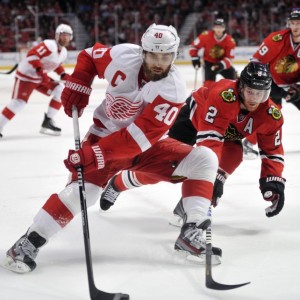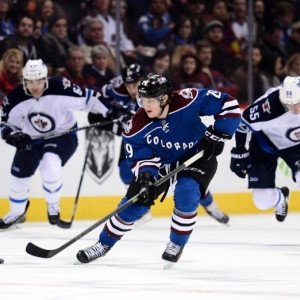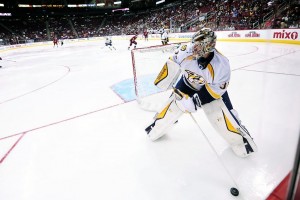With recent talk of increasing net size and to boost lagging offense numbers, NHL executives are also debating the possibility of reducing rink size to increase scoring. With the number of fights and big hits dwindling, the NHL is considering all options to surge entertainment levels across the league.
Currently, the NHL mandates that all ice surfaces be 85 feet in width and 200 feet in length. This change, if enacted, would remove the neutral zone and decrease the length on NHL rinks to 150 feet. In addition, the width of the rink would be reduced by seven and a half feet on each side, resulting in a 70-foot width.
Change In Play

With the rink dimensions reduced, the red line would then serve as the “blue line” in terms of zone entries and offsides. The same rules would apply—a player cannot enter the offensive zone from the defensive zone before the puck, otherwise resulting in an offsides stoppage.
NHL Secretary of Offense Pierre Cestfaux commented on the proposed change:
“With scoring on the decline, we need to consider all options to create more offense and entertainment value. With the removal of the neutral zone, teams could quickly break out of their zone in odd-man rushes. Neutral zone traps and defensive schemes will be a thing of the past.”
Teams like the Detroit Red Wings and Washington Capitals, who have made their living on their transition game, will need to adapt to this high-octane style of play in order to keep up with the Joneses.
New Strategies

With the opponent so close to their net, teams could opt to keep one defenseman back in the defensive zone to prevent breakaways and odd-man rushes. On the flipside, teams on defense could keep a forward cherry-picking at the top of the zone for a quick pass that leads to a scoring opportunity. As a result, play would generally be four vs. four and create more space for the skilled players to take over.
“We’ve all seen the success of three-on-three overtime, so why not essentially apply the same thinking to the entire game?” stated Cestfaux. “Teams will figure out strategies to maximize the ability to quickly get into the offensive zone.”
Additionally, this change would eliminate icing calls, so teams could strategically dump the puck in with a streaking forward on the way to pick it up.
Entertainment and Revenue
With the rink size decreasing, NHL arenas have the opportunity to add more seats where the rink no longer covers. And with more seats comes more revenue.
“Teams have discussed painting the floor under the new seats with the lines and coloring that used to be there,” said Cestfaux. “This really provides fans with an opportunity to feel like they are part of the action.”
Another added entertainment aspect, would be the ability for fans to see their generally favorite NHL warm-up routine throughout the game.
“Fans get a kick out of when the team crowds around the backup goaltender in net and pass and hack at the puck until it goes in. The reduced rink size will allow that to happen organically throughout the game.”
Other Changes On The Way?

Reducing the rink size may not be the only change the NHL implements to create more offense. The sizes of goaltenders may be changing as well.
“We are tinkering with the idea of limiting goaltenders’ height to five-foot-ten (5’10”),” said Cestfaux. “The bigger goaltenders simply cover way too much of the net, this is not an ideal situation. Of course this will have to be negotiated in the next CBA and likely grandfathered in, but we need to be prepared for the inevitable discussion.”
Past goaltenders like Chris Terreri, Darren Pang, and Jeff Lerg have all proven that, when it comes to goaltending, size does not matter.
But Seriously Folks
Increasing the size of the net would essentially be the same as making NBA hoops bigger or extending NFL endzones by five yards. Yes, more offense and scoring would be created, but it is messing with a part of the game that should not be messed with. Reduce the size of goalies’ chest protectors, pants, and stick paddles, while maintaining appropriate protection, to boost scoring before changing something that has been a standard in the NHL for over 100 years.